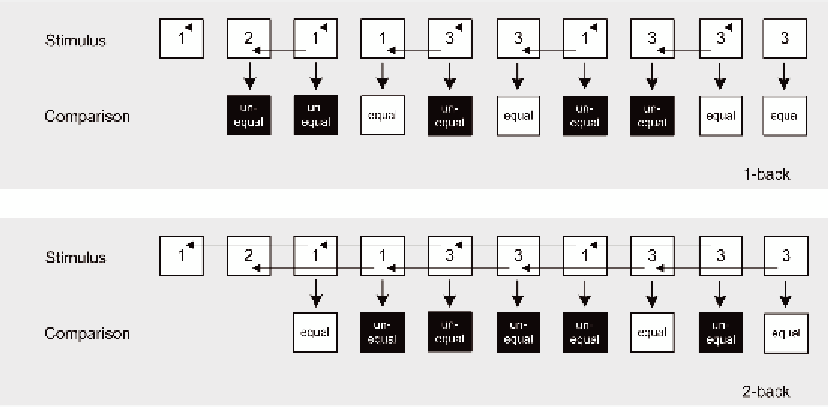Information Technology Reference
In-Depth Information
Figure 3. Presented stimuli and correct answers (“Comparison”) for 1-back and 2-back continuous-
matching-tasks
the current stimulus (the current number) with the
one presented
n
steps back, see Figure 3. In the
experiment,
n
was varied between 0 (no additional
load) and 2 (high additional load).
The hypothesis was, again, that with increas-
ing difficulty of the task, subjects would commit
more errors in correctly rating the reverberation
time as a measure of perceived quality. Here, for
the statistical analysis, the rating errors were re-
structured according to flaw size, such that each
0.5s deviation would result in one error point. The
subsequent analysis was performed on error points.
A complete description of the experiment can be
found in (Reiter, 2009, pp. 203-212).
A comparison of the error rates for “navigation
only” with “navigation with 2-back task” resulted
in a highly significant difference (T=20, p≤0.01).
Comparing these results to the first experiment
described above, it becomes apparent that inner-
modal influence of task is significantly greater
than cross-modal influence. This might indicate
that humans perform a pre-processing of stimuli
that—depending on modality - takes place in
separate areas of the brain. Thus, in situations
where stimuli that belong to different modali-
ties have to be processed at the same time, we
are better able to parallelize and distribute the
processing accordingly. This is also suggested by
the common theories of capacity limits in human
attention, see above.
Game Example
In a third experiment (Reiter & Weitzel, 2007),
inspired by Zielinski, Rumsey, Bech, de Bruyn,
and Kassier (2003) and Kassier, Zielinski, and
Rumsey (2003), it has been shown that cross-
modal influence of interaction is very well possible
when stimuli and interaction/task are carefully
balanced. For this, a simplified Space Invaders-
like arcade game has been created, in which two
different types of objects (donuts and snowballs)
moved through a virtual room. Motion of objects
was straight towards the baseline, on which the
player could move left and right. Players were
instructed to collect as many donuts as possible and
to avoid collisions with snowballs. Each collected
donut resulted in an increase of the player's score
whereas a collision with a snowball decreased
the score. The current game score was displayed

Search WWH ::

Custom Search